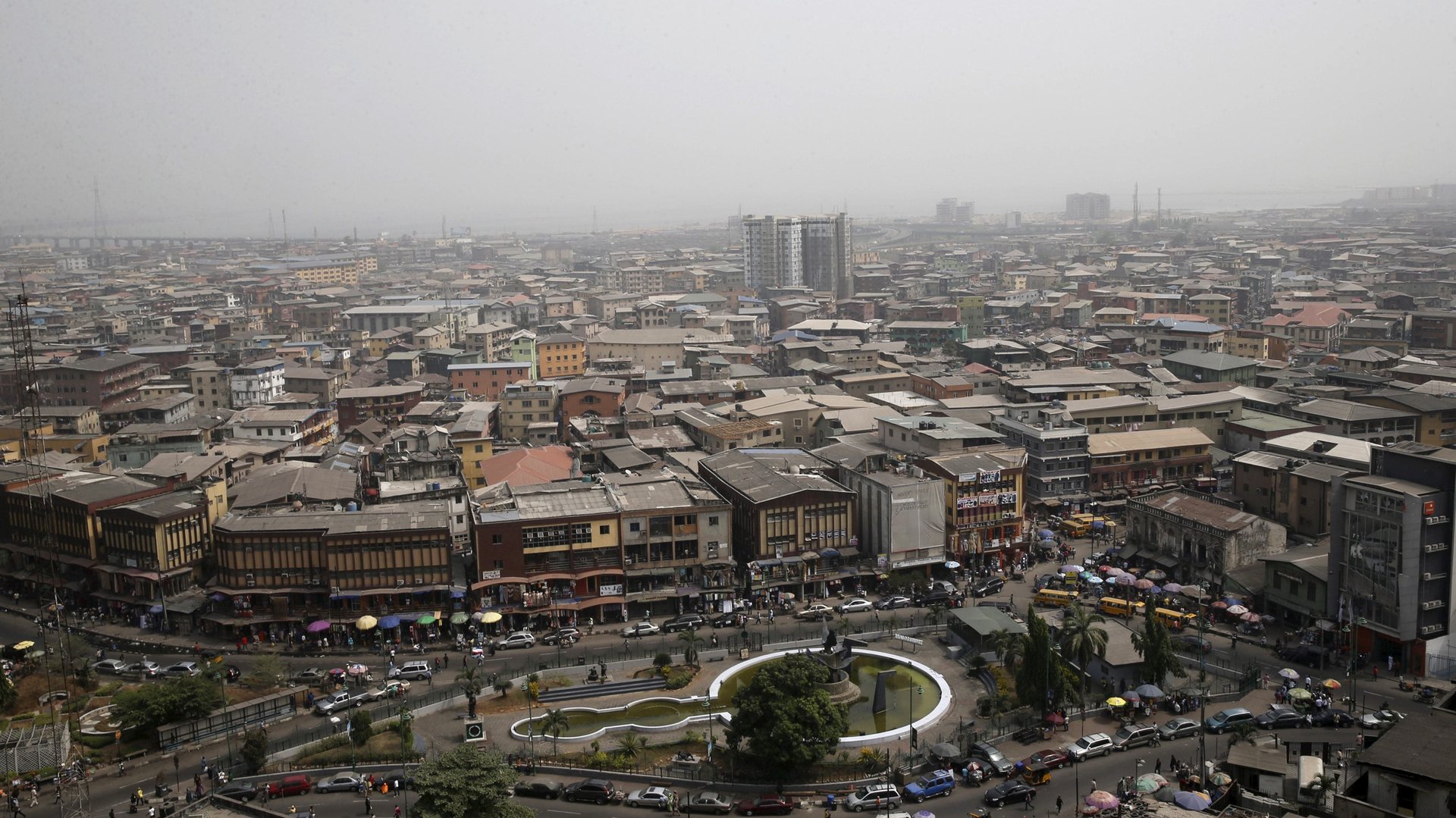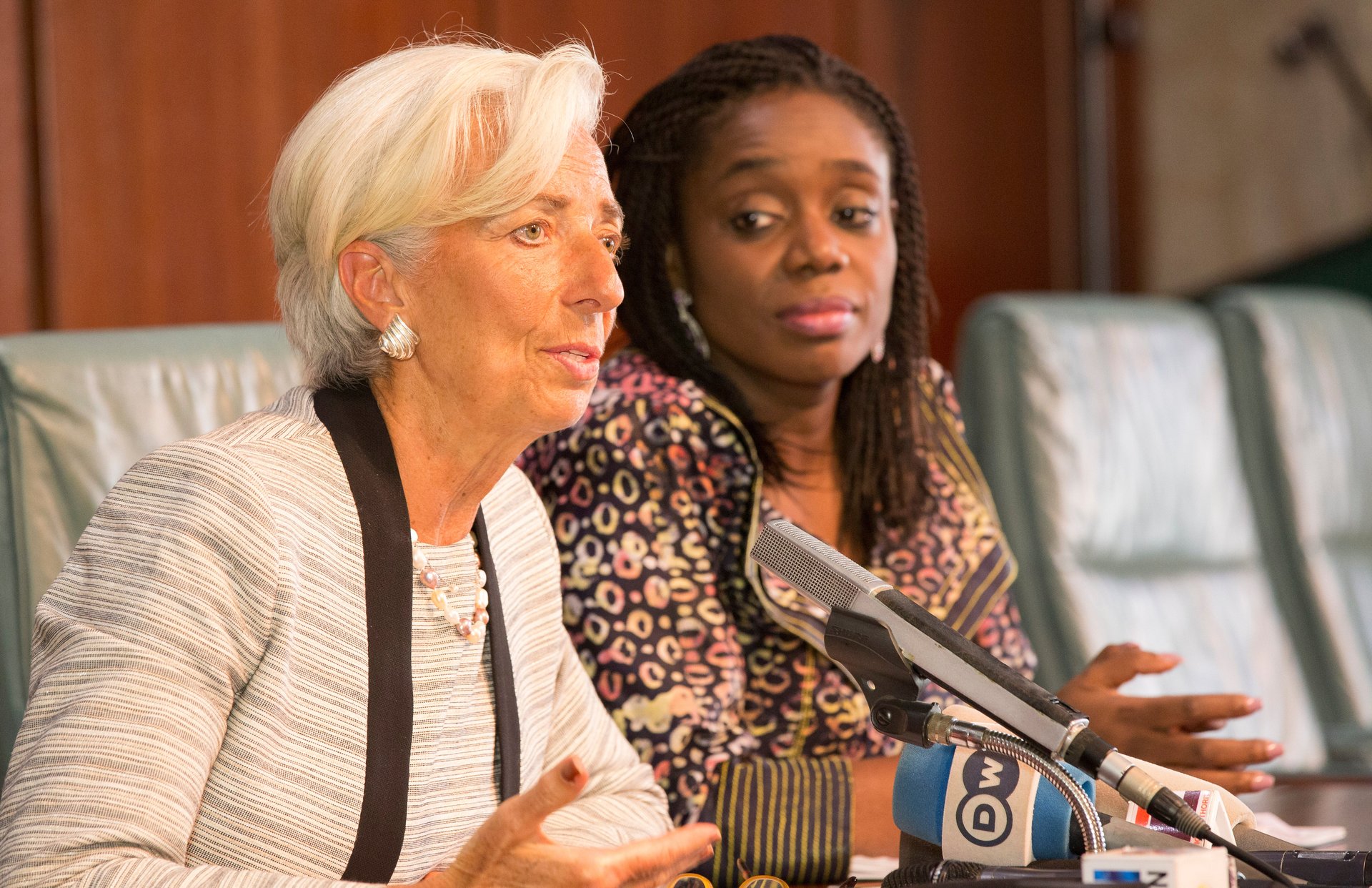Why Nigeria was left with little choice but to do a $1 billion eurobond deal
And so it was that, after a four-year hiatus, Nigeria returned to the Eurobond market with a $1 billion offering that ended up being almost eight times oversubscribed after a roadshow that took in London, Los Angeles, Boston and New York. Investors liked what they heard from Team Nigeria led by Kemi Adeosun, the finance minister.


And so it was that, after a four-year hiatus, Nigeria returned to the Eurobond market with a $1 billion offering that ended up being almost eight times oversubscribed after a roadshow that took in London, Los Angeles, Boston and New York. Investors liked what they heard from Team Nigeria led by Kemi Adeosun, the finance minister.
If you insist on a verdict for the whole exercise, go on and call it a success.
To paraphrase an American politician—before Adeosun was for the eurobond, she was against it. That Nigeria badly needs foreign investment and scarce dollars is clear for everyone to see. The debate was over where to get it. China? World Bank? Eurobonds? Or, heaven forbid, IMF?
Last April, the finance minister said the priority was getting the cheapest possible type of funding: “Initially we were looking simply at the eurobond but then we began to explore opportunities in the renminbi market so there is a possibility of issuing a panda bond,” she is reported to have said. Panda bonds are renminbi-denominated debt sold by foreigners into China’s bond markets.
The priority, Adeosun said, was to borrow “the cheapest possible money” —a total of 1.8 trillion naira (about $9 billion at the time) from international and Nigerian markets. She felt a renminbi-denominated bond would be cheaper than issuing a eurobond. Adeosun also talked about taking advantage of Japans negative interest rates and possibly issuing a Samurai (yen-denominated bond).
No Panda or Samurai bonds ever materialized.
Then there were the concessionary loans from China for infrastructure that seemed to take forever to finalize. They finally got sorted out a few weeks ago, when Nigeria paid an outstanding upfront payment and the Chinese Ex-Im Bank obliged with the rest of the funds for another infrastructure project.
But as nice as infrastructure loans from China might be, they are not cash.
Nigeria’s ambitious 2016 budget was built on a range of very optimistic assumptions about oil prices and production, recovery of funds from corrupt officials, increased tax revenues and plugging leakages in government spending. As it happened, none of these wishes came to pass. When militants were not blowing up pipelines and cutting Nigeria’s oil production, the taxman was struggling to get money out of companies and individuals.
One example from the bond prospectus is particularly sobering—in the first half of 2016, the government expected to receive 753 billion naira in remittances from its various agencies. It only managed to collect 107 billion naira.
We don’t need no IMF
So where to get badly needed funding from? The option of going to the IMF was quickly ruled out, and forcefully too by the government. The IMF is like a swear word in some influential quarters in Nigeria, particularly for Buhari who has ‘previous’ with the IMF back during his days as a military head of state in the eighties.

But the real story is that, though an IMF program would have been much cheaper than a eurobond and on more concessionary terms, the IMF would have insisted on structural reforms that the Nigerian government does not have the stomach for.
An idea of what these reforms might have been can be gleaned from what the IMF got Egypt to sign up to in exchange for a $12 billion loan last November. As has been well publicized, Nigeria has managed to trap itself in terrible foreign exchange regime and being forced to reverse course, by the IMF no less, would have badly damaged the government’s pride if nothing else.
Nigeria managed to secure $600 million from the African Development Bank in November last year but this is nowhere near the $5 billion it says it needs to fund its budget. Of that, it wants to borrow $4 billion from the World Bank but it needs to present a credible reform before the bank will listen to its request. That plan is due to be published any minute now according to the government.
Enter the eurobond
That leaves the $1 billion to be funded by a eurobond. This is clearly the most expensive type of funding available to Nigeria. Indeed, the eurobond closed at a yield of 7.875%. Outside of emerging markets, such returns are not available to yield hungry investors anywhere. Buying German or Swiss or UK government bonds will probably leave you out of pocket over the long term these days.
Many emerging market countries have spotted this opening in the market and have piled in to take advantage a relatively easy market in which to raise funds. Following its near $100 billion default in 2001, Argentina returned to the bond market to raise $16.5 billion ($69 billion in bids) in 2016. It plans to raise another $10 billion in 2017. Saudi Arabia issued its maiden sovereign bond in October last year with a $17.5 billion issue ($67 billion in bids). In between them, Qatar raised $9 billion in May (double what it initially planned to raise) and Abu Dhabi raised $5 billion in April. Last month, Egypt raised $4 billion.
It’s not a very difficult market in which to raise money at the moment. Investors will generally listen to a good enough story and finance minister Adeosun, by all accounts, put forward a very good case during the roadshows.
Nigerians are right to wonder what this expensive debt will be used for. The finance minister and other government officials have been coy on this question simply saying the proceeds will go towards ‘budget support’. The bond prospectus does not provide any further clarity. Under the section headed ‘Use of proceeds’ there is just one sentence that says “the net proceeds from each issue of Notes will be applied by the Issuer toward funding of capital expenditures set forth in the relevant Federal Government Appropriation Act in effect at the time of issuance”.
Most Nigerians think of the budget in terms of recurrent (salaries) and capital (roads and bridges). Over the last five to six years, the capital portion is usually less than 30% of the budget. In reality however, anytime the government runs into financial trouble (which is every time), the first thing that gets cut is the capital portion of the budget. Which means, very little gets spent on the infrastructure that the country so desperately needs. Every government makes the right noises about cutting recurrent spending in favor of capital spend—betting on them failing to do so is one of the safest bets anyone can take.
The current government has tried to raise capital spending by keeping the recurrent portion of the budget constant while raising the overall size of the budget in favor of capital spending. Doing this at a time of low oil prices has meant that the outcome in 2016 was the same as previous years—on paper, capital spending was 30% of the budget, in reality it was next to nothing.
Further complicating all of this is that it is difficult to justify what exactly is capital spending in the budgets of government ministries and departments. In December, a Nigerian newspaper reported that the ‘capital’ section of the ministry of works, power and housing’s budget contained items like ‘preparation of budget’, ‘budget activities’ and ‘budget data software’. In a budget document more than 1,000 pages long, there will be many more questionable items sitting under ‘capital’.
And this is the genuine fear many Nigerians have over foreign borrowing. That it will simply be used to fund payment of salaries or worse, get stolen. The bond will have to be repaid with foreign currency. If oil production is further crippled by militancy in the Niger Delta or oil prices suffer another fall, the government will find itself squeezed. Nigerians want to hear that the government borrowed money to build a new road or bridge or power plant.
In this sense, the government has been prudent to borrow only $1 billion (although it plans to issue more bonds later this year). The strong appetite from investors would also have given the government’s confidence some badly need boost. Nigeria now has an extended yield curve—having previously sold 5 and 10 year bonds in 2011 and 2013, it has now added a 15-year bond to its profile.
So all in all, a much better week than usual for Nigeria’s government. But plenty of choppy waters ahead still. That much trailed National Economic Regeneration and Growth Plan (NERGP) can’t come too soon.